So, “Do I need to know Japanese to visit Japan?” I like it when people ask this question for two reasons:
- Firstly, it is because it means they are thinking of the real-life logistics of their Japan holiday and want to take advantage of any special experiences due to the language barrier ahead.
- But it mainly makes me happy as it often shows their desire to be culturally open and sensitive to local people in Japan and how they are perceived as visitors.
I have lived in Japan on and off for more than 12 years. My first real visit was when I lived in the Japanese countryside as an exchange student in high school. Until then, I had studied a little Japanese at high school in Australia, but I definitely didn’t ‘speak Japanese.’
From memory, I had mastered a handful of adjectives and greetings and could construct a few questions (provided that the answer flown back at me was also not above my level of understanding). For example, I could manage sentences such as “Where is the post office?” and “Yesterday was hot, but today is cold.” (I know, the conversations with me must have been so deep and meaningful then, right?)
So, I would like to take this opportunity to give the proper, detailed answer to the question, “Do you need to know Japanese to visit Japan?” A detailed response that I often wish I had time for in real life.
In this article, I will touch on:
- Access to English signage and guidance for certain types of travel and touristy experiences in Japan.
- My biggest tips for navigating Japan as a non-Japanese speaker.
- My favourite language short-cuts when starting to learn Japanese for your Japan holiday.
- How a little Japanese knowledge can improve a visit to Japan.
- What to do if you hit a language hurdle, and how to overcome miscommunication (or lack of communication).
- The power of body language when it comes to expressing kindness and connection.
- Emergency contact numbers while in Japan.
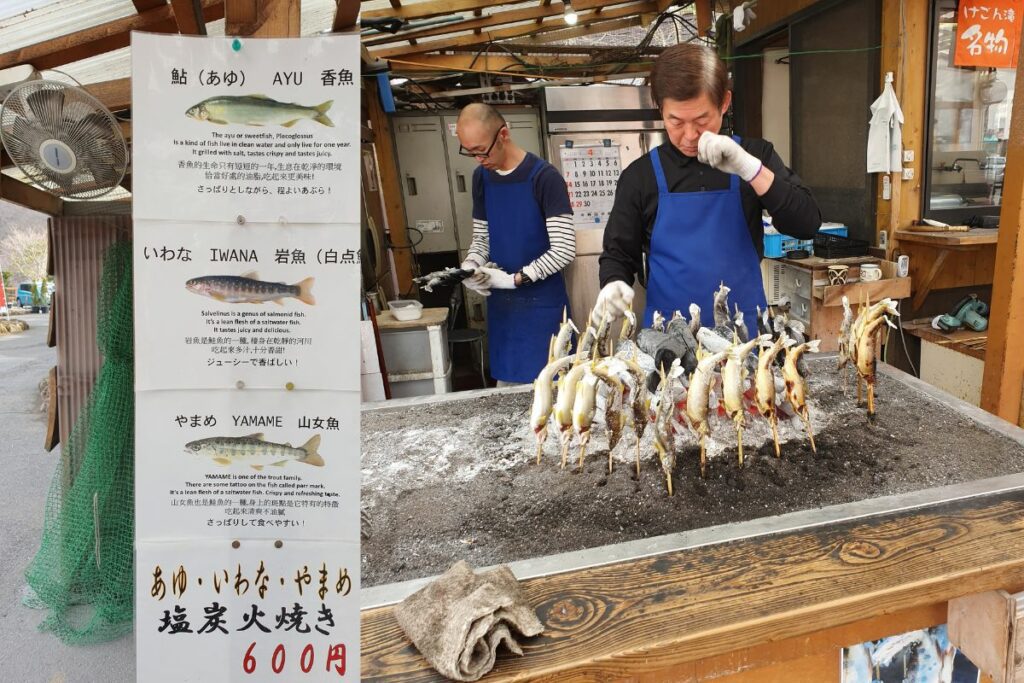
Exploring the Language Barrier
It is not uncommon for even the most well-travelled of visitors to be shocked at how little English is spoken in Japan.
Please don’t get me wrong—Japan has never been as ready for tourists as it is now. It is experiencing some of the highest tourist volumes it has ever seen. So, the systems and processes are well established in English and Japanese.
Even compared to 10 years ago, there is so much more English signage and instructional English (e.g. hotel rules, menus, general explanation of rail systems, English websites). Not just in the major cities, but even smaller spots have more English maps, menus, and tourist brochures.

If this is your first visit to Japan in the past decade, you will notice this difference. As a side note: Japan is also much more credit card friendly than it was ten years ago—but that’s a topic for another day.
However, finding a staff member in Japan who speaks fluent English is not that common, even in the big cities. Speaking English in Japan is not something to be expected. For example, being able to walk into a restaurant and casually ask, “Can you tell me, is there butter on the chicken sandwich?” and be easily and quickly understood is not a given.
I must explain that I am by no means pointing out any flaws in Japan’s system of doing things. It’s the opposite. Japan has managed to keep to itself for many years, only taking on systems and processes from the rest of the world that are deemed required or functional.
That ‘sticking to our own processes’ approach has also meant that spoken English isn’t required to get into university in Japan or to work for large corporations (for those who have decided to remain in Japan for most of their careers, at least).
Whenever I hear from disgruntled English-speaking visitors baffled by the fact that they had some communication ‘hiccups’ while in Japan, I try my best to be polite when explaining that it’s just not possible to have it both ways.
They love Japan because it’s unique, quirky, reliable, punctual, and the most delicious mix of ‘old and new’—which is also often why the language landscape looks different. When I’m feeling polite, I say this in my head, but I challenge visitors to think: When doing their everyday jobs at home, how many times have they automatically changed to speak a foreign visitor’s language? Hmmm.

There is a reason that bloggers and YouTubers harp on more and more about ‘the hidden restaurant you need to see!’ in Japan more than elsewhere. I believe it’s partly because the language barrier gamifies that ‘treasure hunt’ for some unique moments and experiences in Japan.
Navigating Language Barriers in Japan
Naturally, you will encounter fewer language obstacles depending on how and where you are on holiday in Japan. For example, someone staying at the Hyatt, trying a sushi place they saw on the Food Network, and then checking out Tokyo Disneyland will have a different experience than someone renting a van and navigating the less famous prefectures in the countryside.
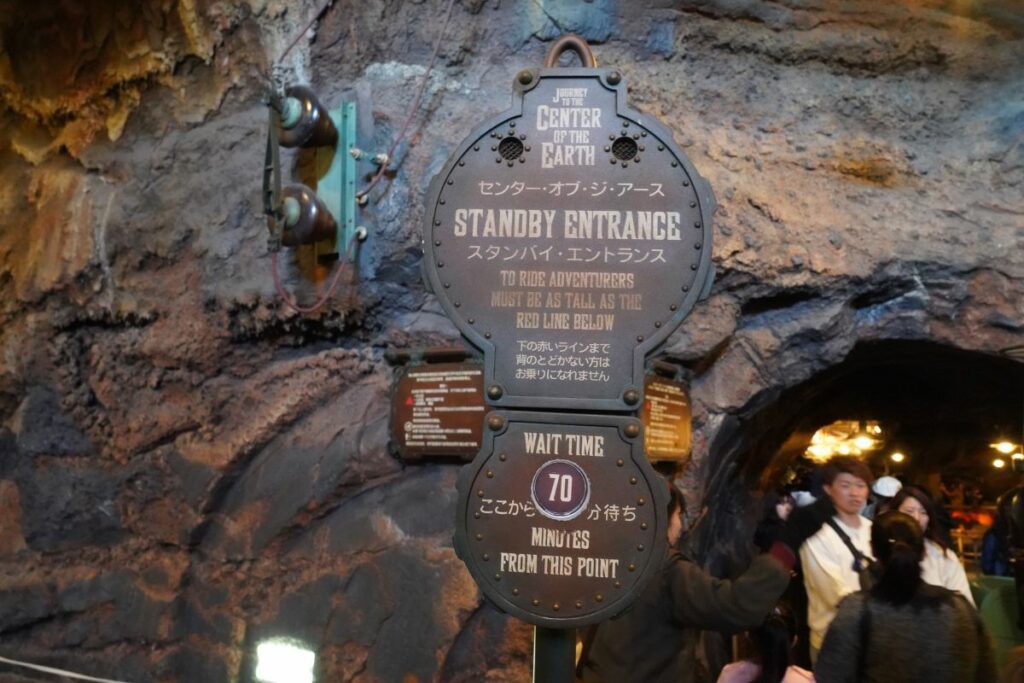
You will also find that in most main cities in Japan, the staff will specialise in English, which is relevant to their expertise. This, of course, makes perfect sense. For example:
- The guy at the train station can most likely (especially in a big city) explain which exit you will need to use or that you will need to use a different train line to get to that particular tourist spot (but won’t be able to help you with specialty foods and restaurants nearby); or
- The woman at the omurice (rice served in an omelette) restaurant will most likely be able to speak with you about which sauces are on the menu today (but she won’t be able to assist with your train ticket question).
For those who are feeling more anxious about the language barrier in Japan, I recommend saving long-form questions for places such as:
- international airports
- tourist information centres
- hotel concierge or information desks

To illustrate, if someone in your family has a serious illness or a strict dietary requirement, I strongly recommend staying at a hotel with an English-speaking concierge/reception desk – or a very hands-on Airbnb host. They can then hold your hand and take out that room for error when out and about. The same rules apply when travelling with a baby. For example, who can speak for your family or call for medical assistance if they fall ill suddenly?
Do I Need to Know Japanese to Go to Japan?
The answer to this question is almost always no. No one needs to worry that they won’t have an amazing holiday without speaking Japanese, or only knowing a few words here and there.
What are the reasons it’s fine not to speak Japanese?
1. Because Japan is so safe.
It is quite difficult to find an unsafe part of Japan. For example, if there is an error or miscommunication about directions, it might just mean walking for an extra 5 minutes out of your way rather than putting you at risk.
It is also extremely rare for someone in Japan to scam you out of money because you don’t speak the language. Trust me: this comes from a girl who didn’t understand the currency in high school. The lady at the supermarket would just make me open my wallet, and she would just take out the exact amount I needed.
2) Because Japanese people are polite, kind and happy to help when they can.
No exaggeration – when you try to speak even a simple phrase in Japanese, you will find so many Japanese people hyping you up pretty much straight away! “Nihongo Joozu” (your Japanese is good!) is practically meme-ified now for visitors to Japan, as many people are kind enough to throw away the compliment for a simple “konnichi wa” or two.
Japanese people are so kind and accommodating that sometimes it is, unfortunately, taken advantage of by long-term visitors to Japan who never take the time to learn much Japanese as they have worked out they can bask in “Nihongo Joozu” glory for years on end. The lack of independence and flexibility of not understanding the world around me for years isn’t for me, but many people are ok with it.
The Value of Learning Some Japanese
While I don’t believe you have to speak Japanese when visiting, I think learning a bit of the language can expand and deepen your holiday experience.
First, it can improve your understanding of Japanese culture. Just like when you travel anywhere in the world, language is tightly connected with culture. Therefore, learning a few little phrases or commonly used terms can broaden your understanding of Japan.
It can also help you get where you need to go. Learning how to ask where something is will get you there more quickly. If you need to buy red socks and know how to say, “Where can I buy red socks?” you will naturally get your hands on something faster.
Finally, it helps build either fleeting or long-lasting connections. When you try out little bits of a new language in a new country, you also show the locals that you understand this is a new culture and language and are open to embracing the “when in Rome” philosophy.
I’ve never found this to be more accurate than when in Japan. Just watching a group of tourists at a bar with their bartender, screaming out in chorus, “Kanpai” (“Cheers!”), is reaching out for connection while also acknowledging the new country they are visiting and its language.

How Easy is Transportation in Japan Without Speaking Japanese?
I find Japanese transportation options well signposted in English. However, regardless of your means of transportation, it is important to have the Google Translate app on your phone to assist with instant translation if you get stuck at any point.
English at Train Stations in Japan
Train travel is easily accessible, even if you don’t speak Japanese. Station names are written in romaji, even in remote parts of Japan. Romaji is the method of writing Japanese using the Latin/Roman alphabet, which is used for English.
In addition to station names, directional signs and information boards in major train stations usually include English, particularly for stations with JR lines and major private railways. Larger stations also have information counters where staff can assist in English. They can help with directions, information about train schedules and ticketing assistance.
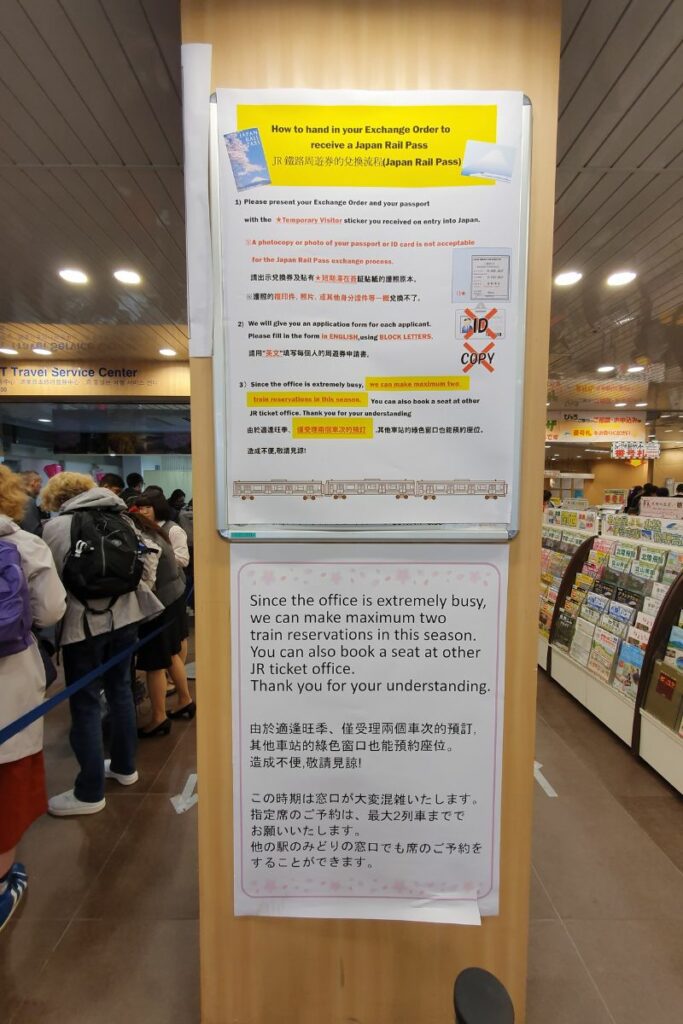
If you need help with tickets, fares or routes, you can use the automated ticket gates right next to the staffed window. This way, you can get assistance and ask questions as needed.
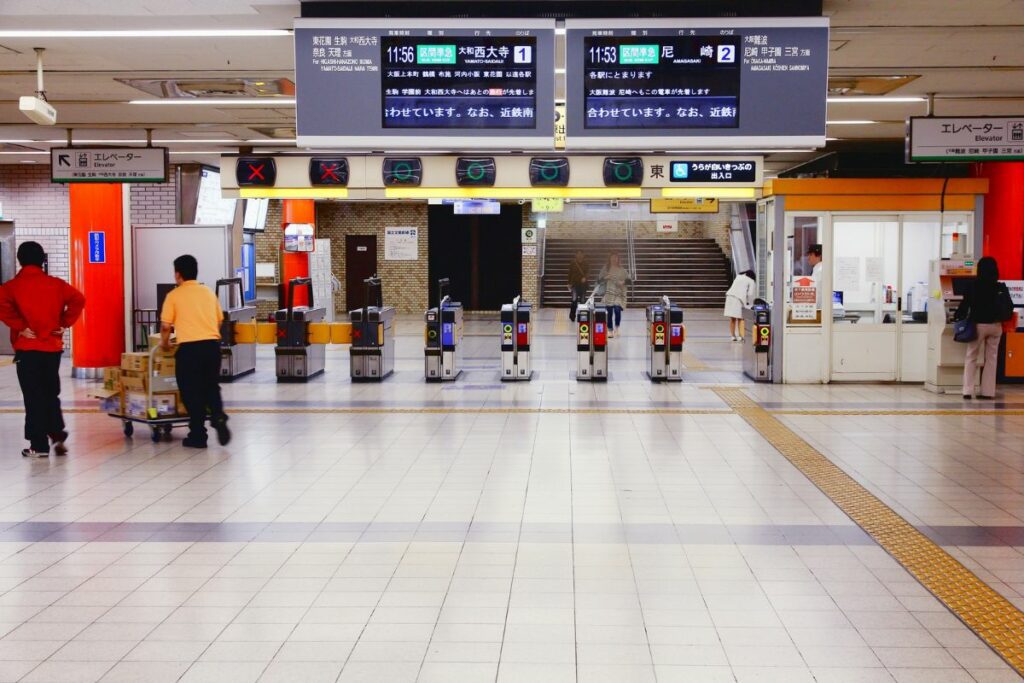
Shinkansen (bullet train) travel is, by far, the most English-friendly way to travel in Japan. All signage and announcements are in English and Japanese.
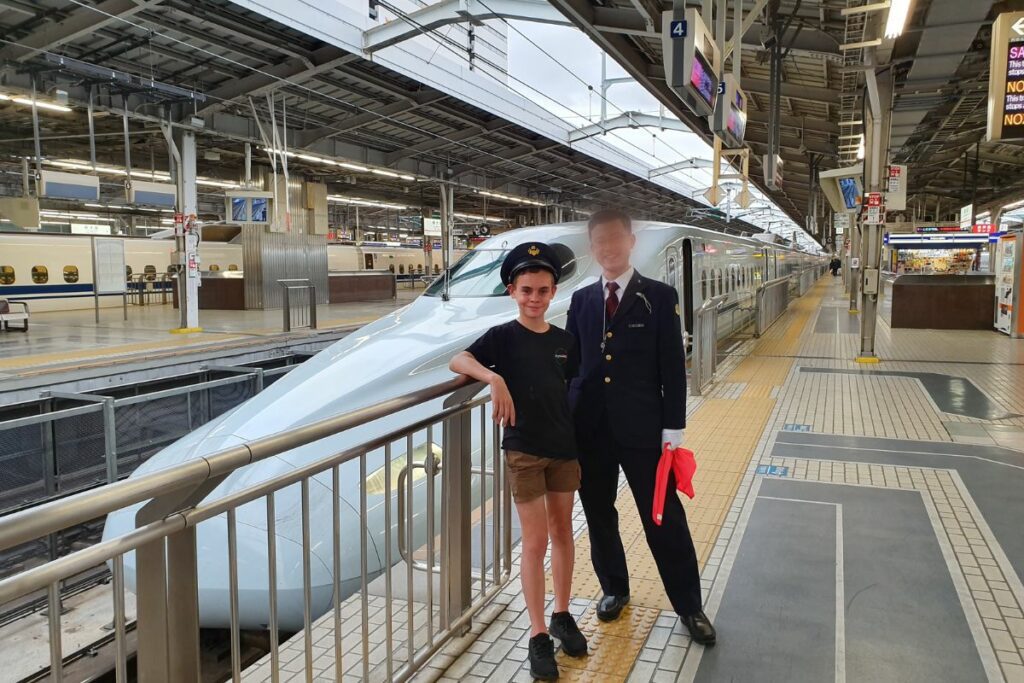
In more remote areas, trains and stations may have limited or no English signage and announcements. Staff may also have limited English, but they are generally very helpful and do their best to assist you.
To make things easier, the smaller stations in more remote locations usually have two platforms—one for each direction—so little language assistance is required.
English on Buses in Japan
In larger cities like Tokyo, Osaka, and Kyoto, city centre buses have Japanese, English, and sometimes Chinese announcements. English signage, route maps, and digital displays are also more likely to be found. You’ll most commonly see this on routes used by tourists, such as airport limousine buses, sightseeing buses, and those connecting major attractions.
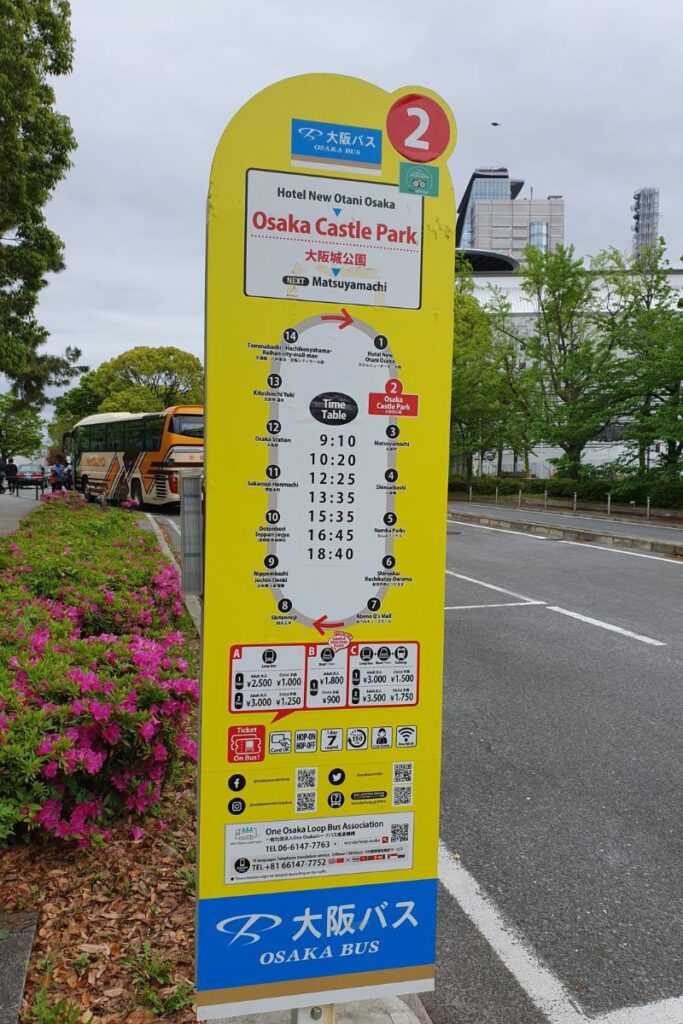
A little tip: in Japan, boarding the bus from the back doors and alighting from the front is common. Payment is usually made on the way out (with cash or a travel card such as Suica, Pasmo, or Icoca).
Long-distance or highway buses connecting major cities or tourist destinations are also likely to be quite foreigner-friendly. English information might be available on their websites, at ticket counters, and sometimes on the bus.
Buses in rural areas of Japan may have limited English instructions, announcements and signage, and finding route information can also be challenging.
Translation apps like Google Translate and Papago can be very helpful when there is only Japanese signage and information. I also recommend relying heavily on Google Maps to help you board the correct bus and track your location. You can also use Google Maps to double-check with a driver to see if you are where you need to be.
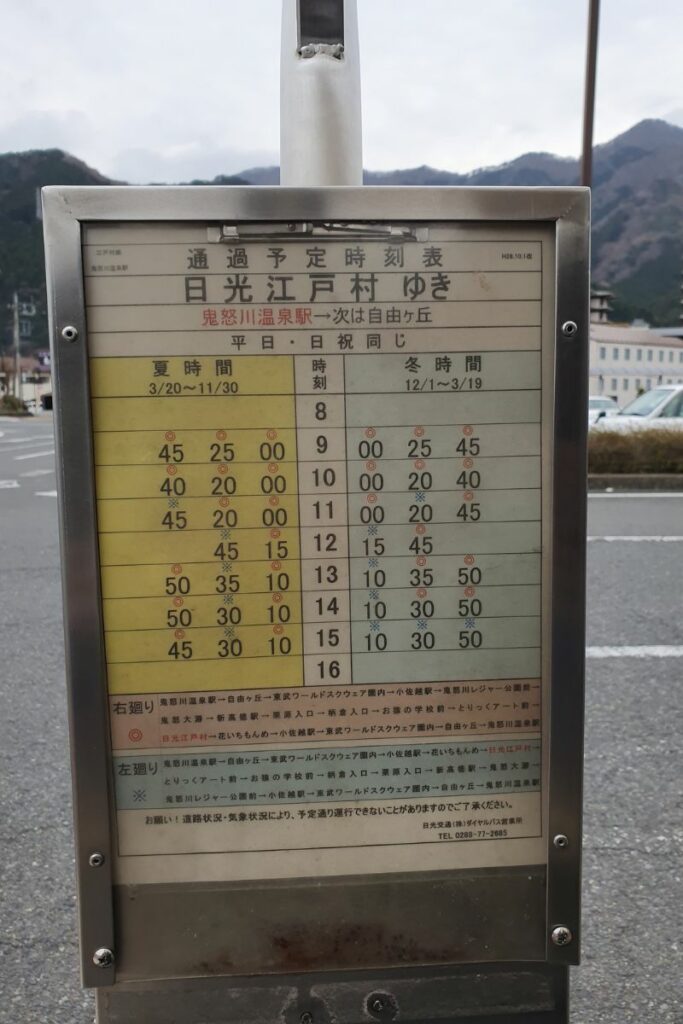
English in Taxis in Japan
Taxi drivers in Japan offer an extremely high level of customer service. They want to make sure they can get you where you want to go.
For this reason, I recommend keeping instructions as simple as possible (and if you want to try some small talk, wait until you are well on your way). This is because many drivers may speak limited English.
Instructions should be simple and to the point. “To Kinkakuji, please”. For longer instructions, break them into digestible segments. For example, “To Tokyo Station, please … To the Shinkansen side of Tokyo Station, please.”
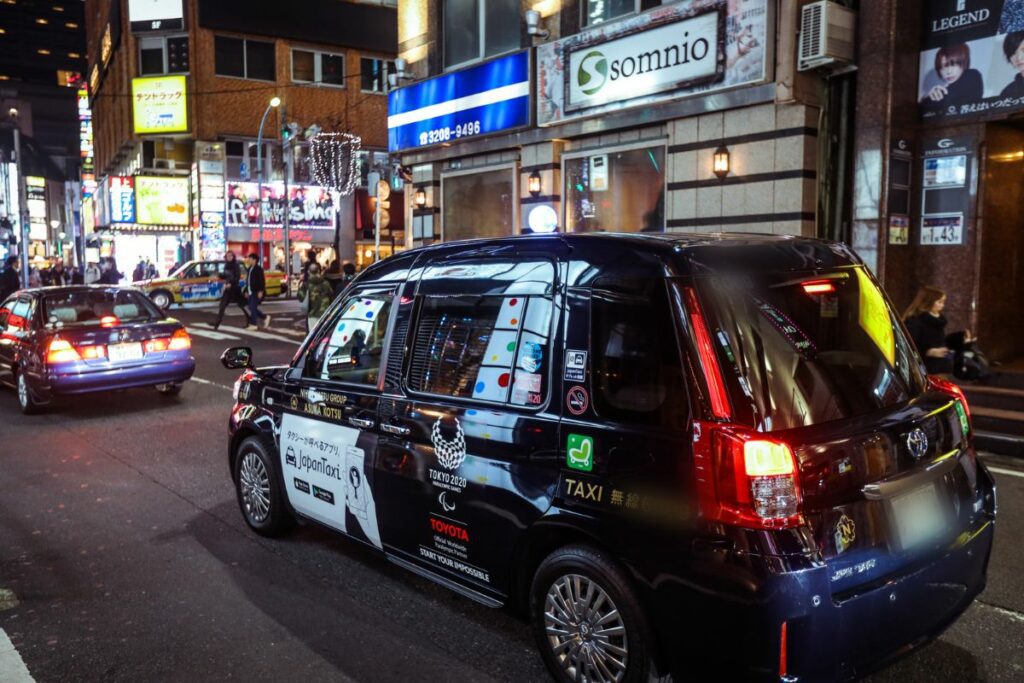
Another useful tip is to prepare written addresses. If you’re staying in a hotel, front desk staff or the concierge can help, as it is a common request.
You can also use map apps, like Google Maps, to show the driver your destination.
There are now ride-share apps, such as Uber or Didi, that can help overcome language barriers in taxis. However, these services end up being taxis anyway, so I recommend still relying on my language tips above for giving directions.
Road Signage & Driving in Japan
I think the most important thing to note for those new to Japan is that street names and numbers do not guide Japanese addresses.
A house or business is found within a certain ward of a city. A block or area is broken down into segments. Then, it is specified which part of a block and, after that, a certain location within that block by a number. For example, it is not possible to ‘find house number 53 on the street and then naturally assume that 55 is next door or across the road.’ Streets are rarely signed, so when looking for a specific place, make Google Maps do the hard work for you.
If you are driving in Japan (apart from acquiring an international driving permit), I recommend that you know what the most common road signs mean.
It is also worth remembering that Japanese speed signs indicate driving speeds in kilometres.
I feel that around half of Japanese highway signs (the basic signs regarding upcoming highway exits, etc.) are in English, and an even higher percentage are in romaji (romanised characters). Once again, if you let Google Maps guide your driving journey, you won’t need to rely heavily on these signs.
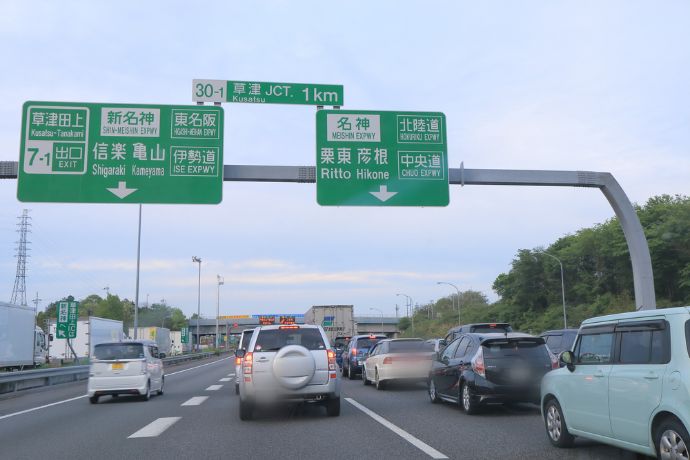
English in Different Types of Accommodation in Japan
I have yet to come across a style of accommodation in Japan that cannot conduct check-in, check-out, and general customer service procedures in basic English. I don’t feel that this is something that anyone needs to stress about.
If they have an English section on their website or advertise on an English third-party site, you will be fine communicating in basic English for the duration of your stay. In my experience, this is the case for both ryokans and hotels in Japan.
Naturally, international chains of hotels and high-end luxury hotels are the options with staff who are more likely to speak fluent English.
English for Accommodation Reservations and Customer Service Enquiries
Worldwide third-party booking services have taken out any language concerns when booking hotels.
Most accommodation options can easily be reserved now using big global sites such as Agoda, Expedia, etc. This will not be an available option for some ryokan accommodation in Japan. If this is the case, it is best to book ryokans directly.
I will discuss this later in this article, but the best way to ask a question or express concern before your stay is by email. It allows for translation apps, etc., meaning that queries can be easily passed on to English-speaking staff members.
Dining and Shopping
Fortunately, dining and shopping encounters (in any country) are mostly transactional, so I don’t believe non-Japanese speakers should spend too much time fretting about potential language concerns.
Dining is also not as stressful as you may imagine. If there is an English menu, point and go. If there isn’t an English menu, pull out Google Translate, hold it over the menu item, and point and go.

You might come across ticket vending machines in some restaurants, where you choose what you want and pay in advance. Quite a lot of these machines have pictures of the food, even if the food descriptions are only in Japanese.
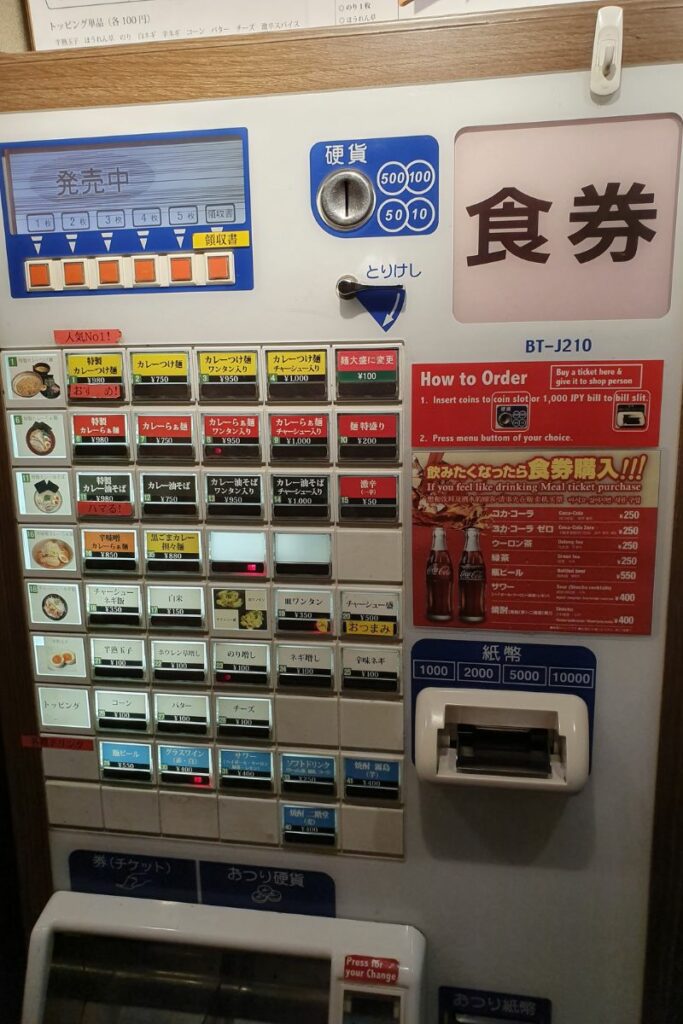
If the vending machine has no pictures and is purely in Japanese, you can use a translation app that can give a pretty good approximation of what the food choices are, although the translations can sometimes be pretty funny.
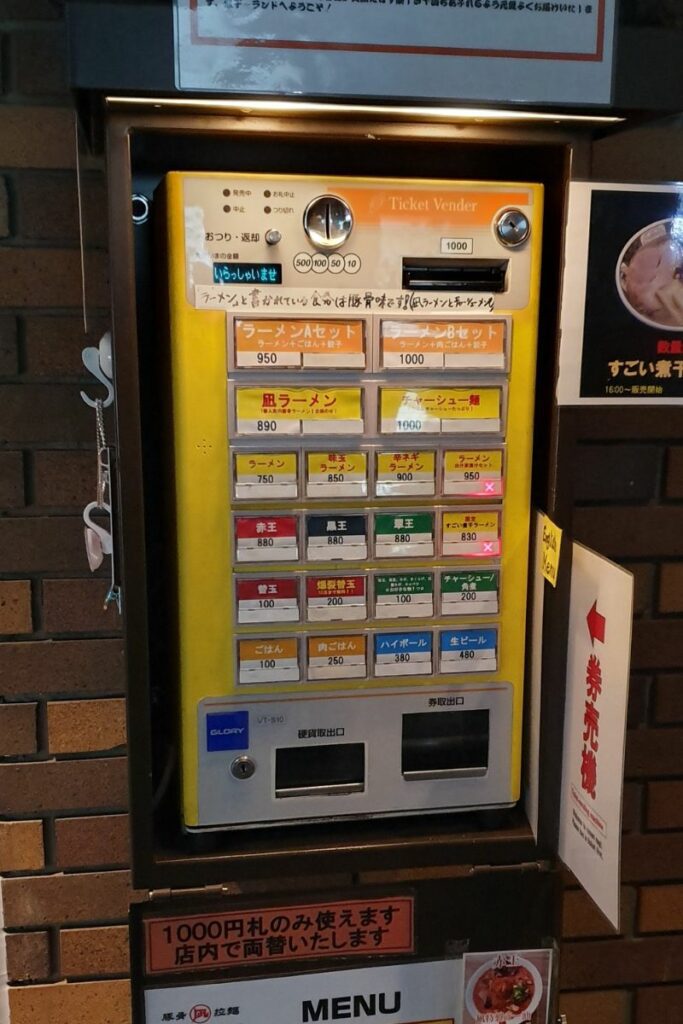
Particularly when making payments, I recommend taking a deep breath and just slowing everything down. A lot of Japanese payment-related vocabulary is a version of the English word anyway – for example, “credit card” is “kurejitto ka-do”. Keep your answers to one or two words. Be open to gesturing what you need too. You’ll be fine.
It does get tricky if you have serious/strict dietary requirements. If this is the case, you will need to email the restaurant ahead of time to see what customizations can be made or which ingredients are used. I also recommend staying in a hotel with a concierge who can assist with these situations by calling ahead to confirm.
Customisation of Orders
Side note: customisation is not really something that is done in Japan. So, it is not usual practice for a customer to, for example, ask for “the chicken sandwich without the mayo and the cheese and put the lettuce on the side.”
In Japan, the most common practice is buying or ordering the item as is or choosing something else. No one will be unkind to you if you attempt to do this, but you might find they cannot assist you with your request.
This is just because it’s not the norm. As Japan has systems in place, this will upset those systems and mean they can’t tend to their other customers with the same efficiency level.
So, my honest recommendation? In Japan, embrace the Japanese way and order food as it’s written on the menu. That also takes out the stress of any language obstacles then too.
English in Shops and Convenience Stores
As mentioned above, interactions in shops and convenience stores are almost always transactional. It’s pretty easy to work out what most items are in shops and convenience stores. If in doubt, use Google Translate, Papago or another translation app.
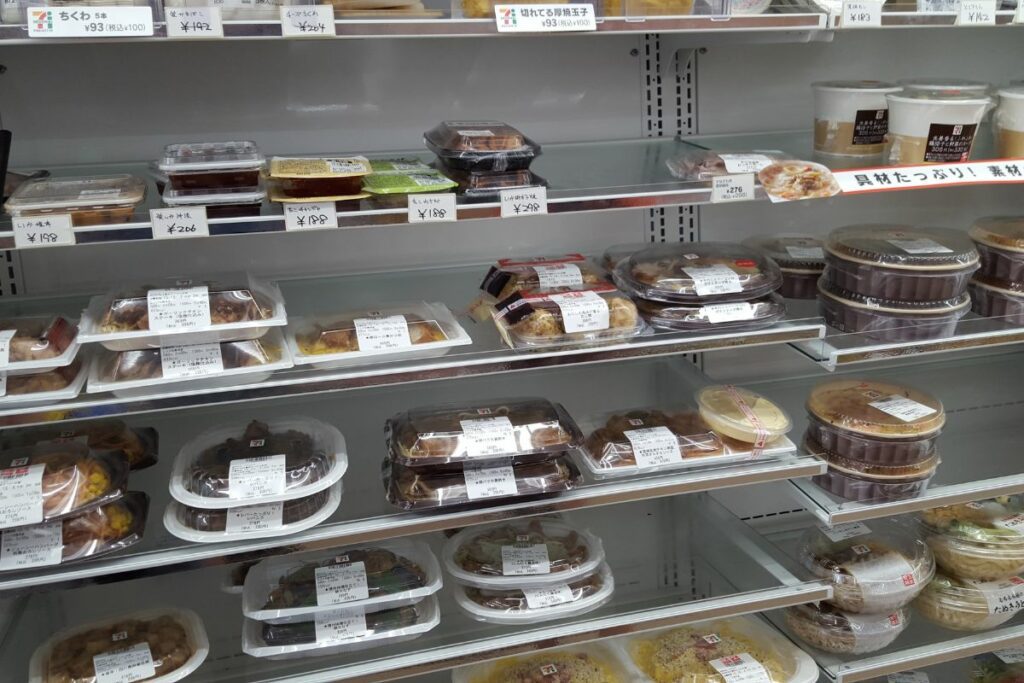
Even in a rural area, you won’t need to say much at all. Some quick phrases you might want to have up your sleeve are “Attatamete kudasai” (please heat this up) and “Fukuro wa irimasen” (I don’t need a bag).
Since the pandemic, most convenience stores have an automated cash register system (and some have an entirely self-service check-out). A clerk usually scans and bags your items, but the customer dispenses the money into the machine. Even if it’s not automated, it’s easy to see how much you need to pay and then you just hand your money over. No language skills are needed there!
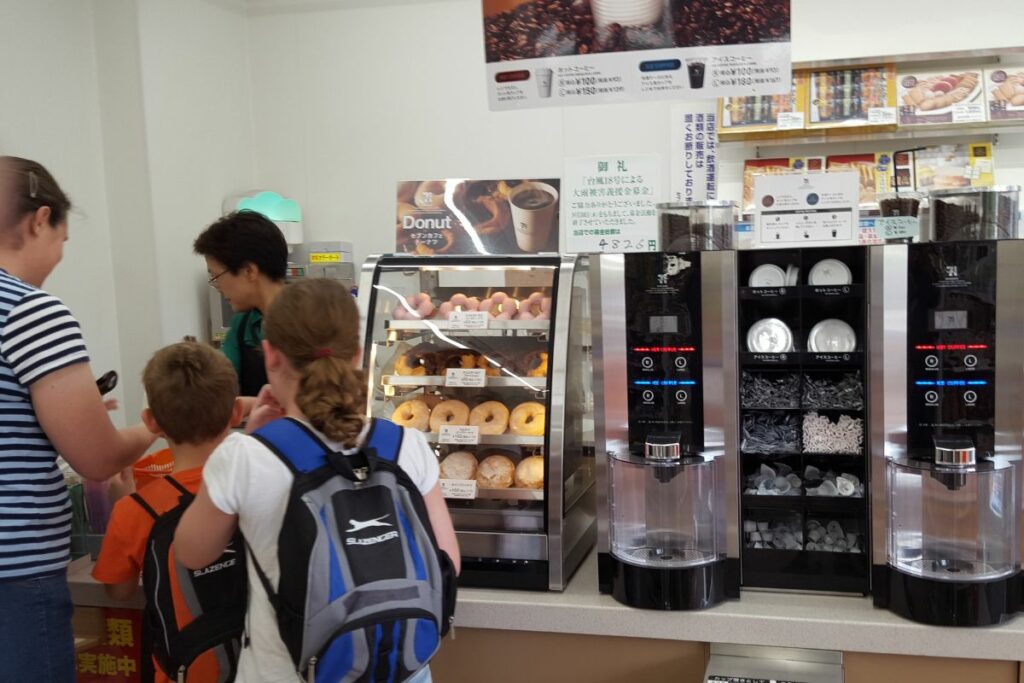
Using English at Tourist Attractions and Entertainment Venues
Knowing Japanese is not necessary at larger tourist attractions and entertainment venues. Places like Disneyland and Universal Studios in Japan almost have more English than Japanese.
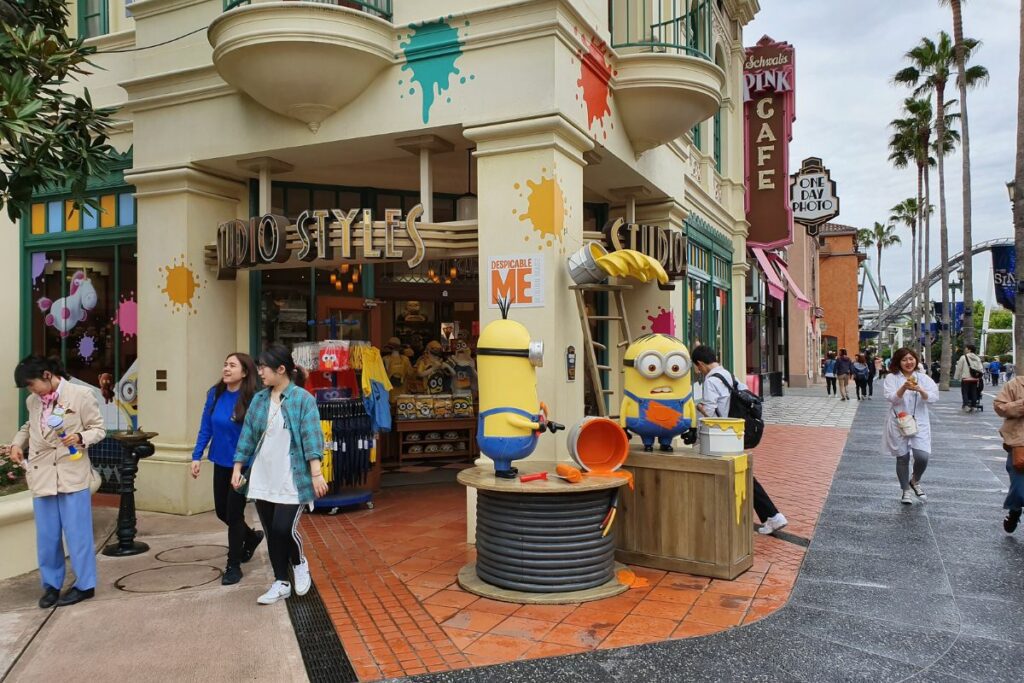
Major tourist spots, museums, theme parks, and entertainment venues have signage and instructions in English (and other languages). Maps, guides, and brochures written in English are also common.
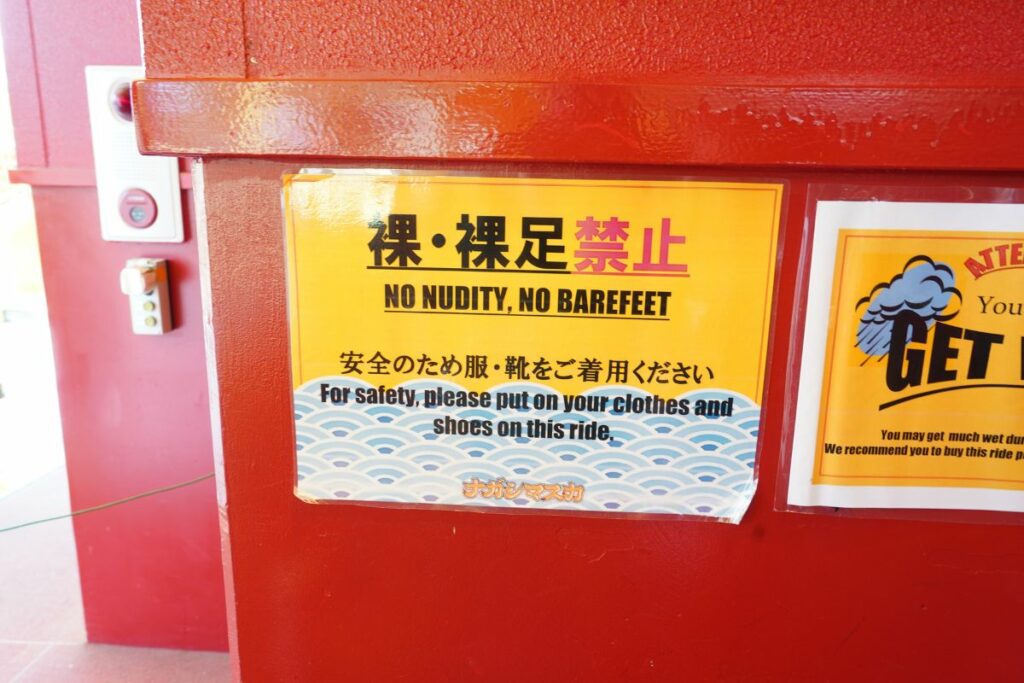
Many places also offer audio guides in various languages. Some places also have their own apps that you can download for self-guided tours, maps and information.
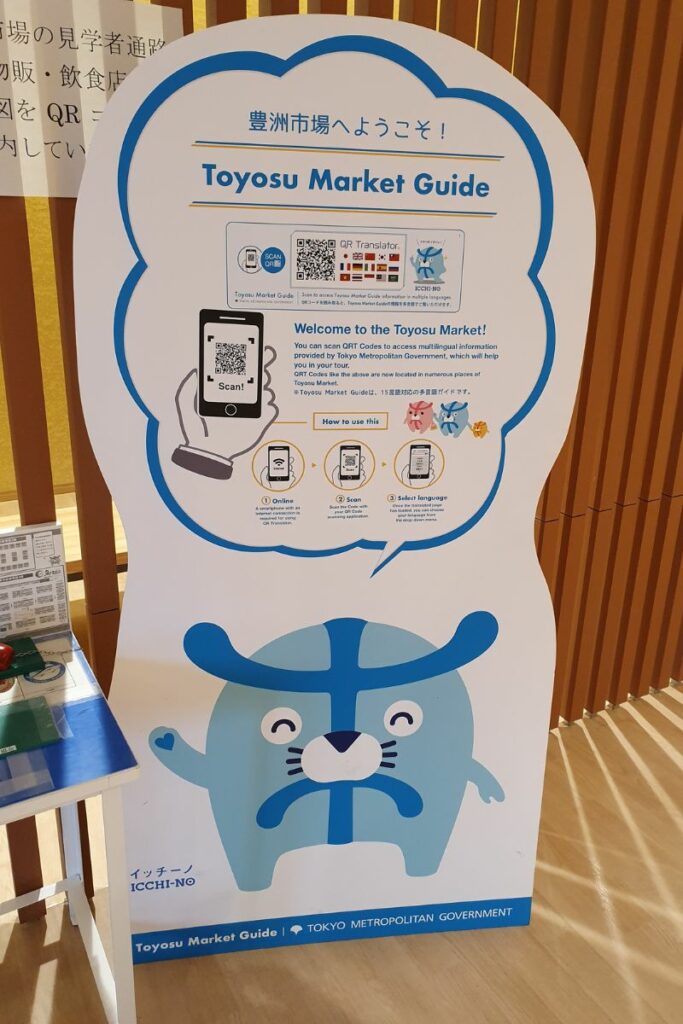
Larger attractions also have information centres or desks where staff can speak English. They can provide assistance, maps, brochures, and other services.
Major tourist attractions will also have English versions of their websites, which will help visitors plan visits and book tickets in advance without language difficulties.
English at Smaller Tourist Attractions
Smaller tourist attractions might have limited or no English signage and staff may not speak English fluently. However, this should not stop you from visiting. Navigating and enjoying such places is still very feasible with some preparation and flexibility and can still be a lot of fun.
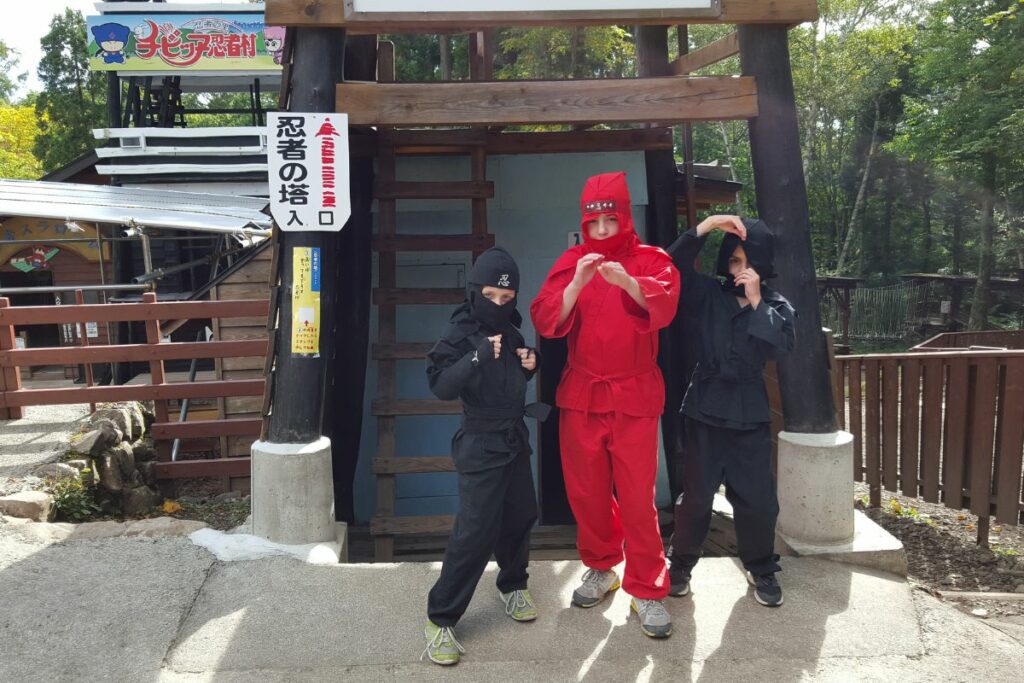
My first tip is to do some research in advance. Many smaller attractions should have at least some online information, including blogs, travel forums, and Facebook groups (such as Japan Travel Planning). Even smaller attractions often have an English-language option on their websites. Attractions with Japanese-only websites or pages can also be readily translated into English using web browsers ‘translate page from Japanese’ option/popup.
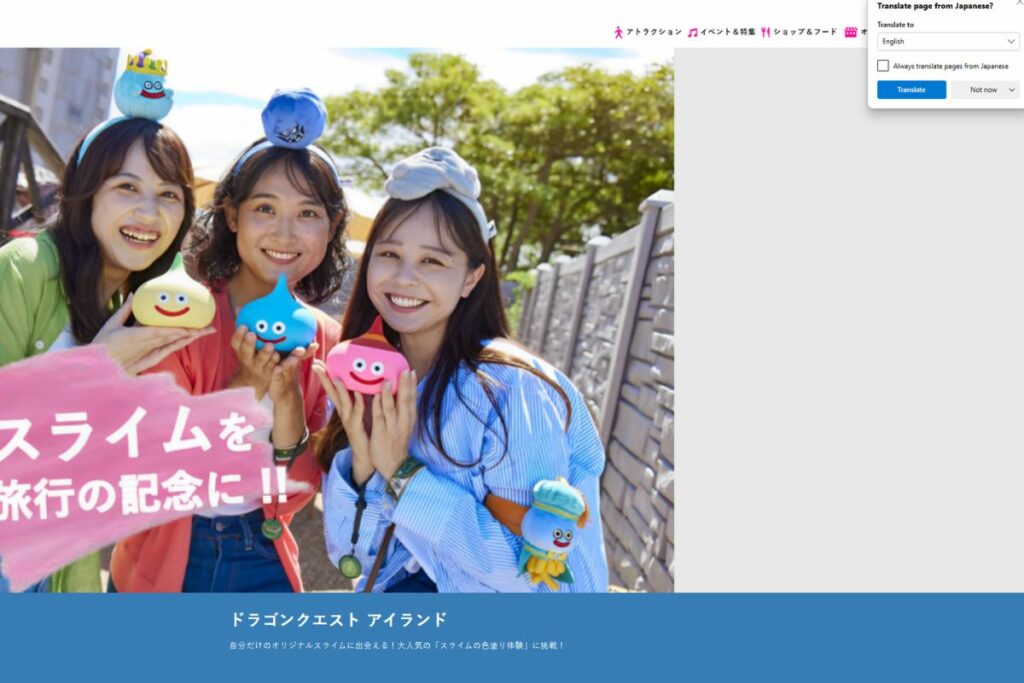
When visiting the attractions, try to learn some basic relevant phrases or use a translation app. Showing interest and respect for Japanese customs and trying to learn even a little Japanese can go a long way to getting help and guidance.
You can also use simple phrases when speaking or use visual aids such as maps or pictures on your phone. Non-verbal communication can also be incredibly effective when there’s a language barrier. I’ll expand on some of these tips shortly.
Handy Phrases & Language Hacks When Travelling to Japan
Do you need to know Japanese when travelling in Japan? No. But it can enhance your whole holiday. So, I want to share some handy phrases and hacks for Japanese travel to help you make the most of your time.
Learning Greetings and “Thank You”, but Don’t Overcomplicate It
Here are some basic phrases to get you started.
- Arigato Gozaimasu (Thank you very much) is polite and suitable for all scenarios. There are other shortened casual versions, but this option is polite to old people, great at the shops, and meaningful enough to use when thanking someone for amazing service or a gift … It’s the best bet.
- Sumimasen (Excuse Me / Sorry) is also a great word to have ready to go. You bump into someone? Sumimasen. Do you need to get a waiter’s attention? Sumimasen. Do you need to interrupt a conversation urgently? Sumimasen. Did you make a mistake? Sumimasen.
- Gochisousama (That was delicious / That was an amazing meal) is a phrase used often in Japan. Use it as you leave a restaurant, as it lets the chef know that you enjoyed the food. You can also use it if someone cooks you something in their home, and it is also appropriate to use if someone shouts you dinner.
- Daijoubu desu (I’m fine / It’s okay / No worries) is a good phrase to know as it is so versatile. Someone asks if you need a blanket (and you don’t?). Someone bumps into you and you want to reassure them it’s totally fine? Daijoubu desu. You were sick earlier and someone wants to check you’re now ok, and you are? Daijoubu desu.
Lean Into your Own Personal Needs and Interests
I really encourage people to take the time to learn a few phrases related to their personal needs and interests. If you are going to learn specific phrases based on your personal needs or interests, then think about the questions you imagine that will come up often.
- For example, if you’re a new parent, you could get a phrase book or use Google Translate to learn how to say, “Where can I change baby?” OR “Can I breastfeed here?”
- If you are obsessed with trying high-end sushi, you should brush up on your sushi menu vocabulary so you can ask the chef, “Is this salmon? Is this squid?”
- If you love Sailor Moon, for example, you could perhaps learn how to ask about special edition merchandise, etc.
Keep your English Super Simple and To the Point
Keep the puns and slang at home. Focus on the main word in your sentence and emphasize that word in the (short!) sentence.
For example, Do you have an elevator? (Not. I was wondering if there is an elevator near here.)
e.g. Do you take cash? (Not: Can I ask if you accept cash or credit cards here?)
Use American English If You Can
American English is taught in Japanese schools (for the most part). For this reason, I recommend asking for diapers over nappies, elevators over lifts, strollers over prams, and ketchup over tomato sauce.
Don’t Ask Open-Ended Questions
If you want to find out if they have ketchup, for example, avoid open-ended questions like “What condiments do you have?” Go straight to “Do you have ketchup?” It helps both parties.
The same advice applies to directions. Say, “Does this bus go to the xxxxx museum?” Instead of “Where does this bus go?”
Don’t Ask, “Do you speak English?”
Japanese people are very modest, and often, even if they do, they can sometimes feel pressure to answer yes and say no.
I also think that the question insinuates “do you speak it fluently?” – which is probably not even what you need.
If you need to ask, “Where are the toilets?” the person you speak to doesn’t need to be a proficient English speaker to help you.
What Do you Do When you Hit a Language Barrier in Japan?
It can sometimes happen. What you’re asking is so different to what the other person you are talking to thinks you are asking (and vice versa.)
Here are my tips on what to do if this happens:
- Write down the question /statement. Japanese school students learn English through writing and reading. Some Japanese friends of mine can’t converse much in English but can read whole books and write letters to friends. Write down your question and see if that helps. Written questions can also easily go into translation apps, so that can also help.
- Bring out Google Translate and try it that way. If that doesn’t work – how can you rephrase that question? Are you sure that the thing you are after is actually a thing in Japan? (For example – I’ve had someone ask at a restaurant before, “Do you have soup dumplings?” Soup dumplings are not a Japanese dish, so understandably, the ramen shop owner had zero idea what on earth she was on about.
You Don’t Need Words to Tell if Someone is Kind or Respectful
I’ll bet you a gazillion yen that you can walk into a shop and fall madly in love with the cutest little Japanese granny and grandpa who don’t speak a single word of English. It’s their expressions, mannerisms, and kindness that come across.
And it goes both ways. If you are speaking quietly and respectfully and showing through your actions that you appreciate their help and kindness – it checks out and translates sometimes even better than words.
I also recommend mirroring those around you if you aren’t sure of the polite protocol in a new scenario. If everyone else is speaking quietly, do that. If you’re handed a gift with two hands, receive that gift with two hands. If they are bowing instead of hugging you goodbye, do that.
Emergency Services and Assistance in Japan
If you require urgent assistance in an emergency, please call the numbers below:
- Police 110
- Fire & Ambulance 119 (easiest way to remember? 911 backwards). If possible, it is always best to have a hotel concierge, business owner, or staff member at a tourist location call on your behalf. Then you don’t need to worry about interpreter availability, the hospital emergency system – it is quite different in Japan – or other logistics like your current location address.
- The JNTO 24 Hour Japan Visitor Hotline (English, Chinese & Korean) 050-3816-2787 (If calling from outside of Japan, please call +815038162787). This helpline can help in emergencies and also provide general tourist information.
- It’s also a good idea to have your home country’s embassy/consulate number handy.
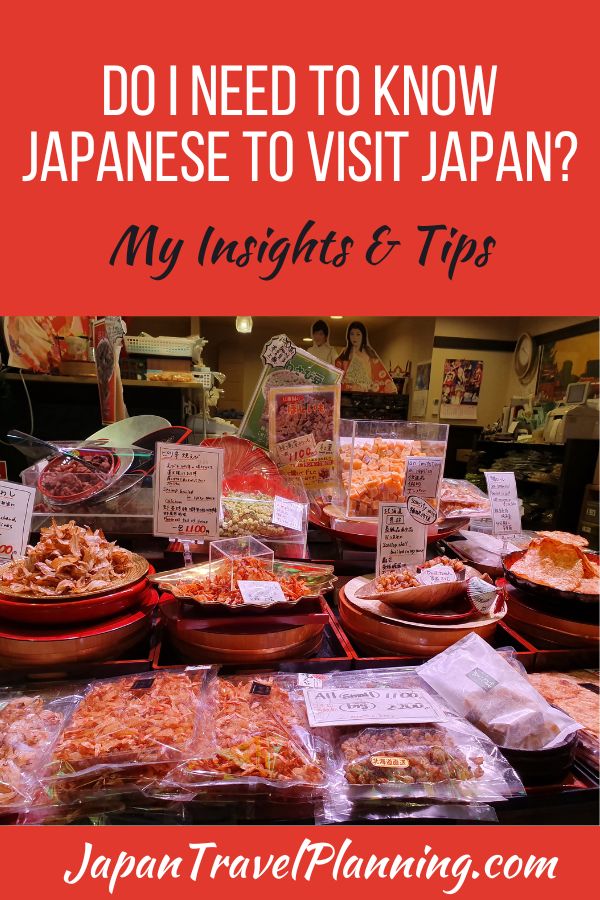
Join the Japan Travel Planning Facebook Group or Discord Server
You are also welcome to join our Japan Travel Planning Facebook Group and our Japan Travel Planning Discord Server – they are great resources to enable you to ask questions about your upcoming trip to Japan!
Disclaimer: This article contains affiliate links. If you book after clicking on one of these links then we may receive a small commission at no extra cost to you.

